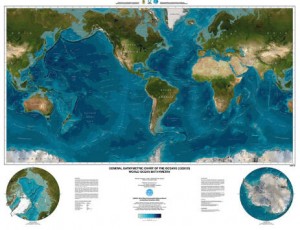Southern Fried Scientist -
The deep benthos is simultaneously the largest and least explored ecosystem on the planet. Covering nearly 60% of the Earth’s surface, it supports an almost unimaginable reservoir of biodiversity, rivaling all terrestrial habitats combined.
Its microbial and metabolic diversity have revolutionized our view of how life is sustained, not once, but twice (first with the discovery of chemoautotrophic organisms at hydrothermal vents, and again with the discovery of cognate communities at methane cold-seeps).
In spite of these major discoveries, the deep benthos is essentially invisible. Only a select few will ever witness it first hand, while for the rest, it will remain a dark and unfathomable abyss.
This places the deep benthos in a precarious position. Human activities that influence the deep sea go unnoticed. Without a thorough understanding of its ecology, it is impossible to assess the damage caused by anthropogenic impacts.
Although recent and ongoing studies have shed light on many species and communities, the deep benthos remains largely unexplored. Two studies, both released this week, reveal simultaneously how little we know about the deep benthos and how human impacts, even unintentional ones, could shape this ecosystem.
In the effects of natural iron fertilization on deep-sea ecology, Wolff et al. examine the role iron fertilization plays in shaping benthic communities thousands of meters below. Using a combination of deep-sea trawls, sediment collectors, and sea-bed photography, they compared two regions of the the Crozet Plateau, one which experiences high levels of natural iron fertilization and one which is iron depleted.
This is a small scale study (the total sampling area is relatively small) and covers only a single sample and control site, but the sampling regime is comprehensive. Even with its limitations, the conservative analysis by the authors leads to some troubling conclusions.
The community structure at the iron fertilized site was significantly different than that of the iron depleted site. The seafloor was covered in patchy clumps of phytodetritus, which recruited a very different cohort of species, with larger biomass and abundance and a patchier distribution across the sea floor.
All told, the effects of surface iron fertilization dramatically changed the ecology off the underlying benthic community.

Posted via http://batavia08.posterous.com batavia08's posterous
.jpg)
No comments:
Post a Comment